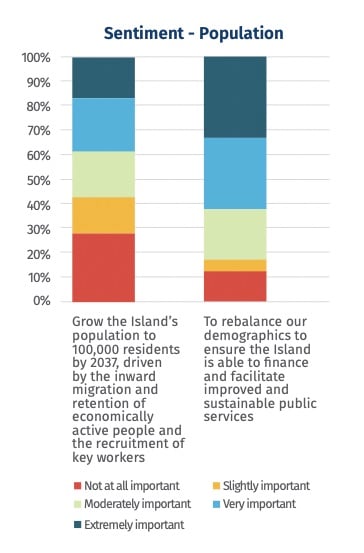The government appears to have quietly lowered the importance of raising the population of the island to 100,000 as part of its draft economic strategy.
Due to go to Tynwald in November, the updated strategy is designed to set the island on a path toward sustained growth over the next 15 years.
The ambition that was ranked most important by respondents to a consultation on the strategy was the aim of generating additional government income for the reinvestment in services and quality of life.
Comparatively, the ambition to grow the population to 100,000 by 2037 was judged the least important, with 28% of responses saying this was ‘not at all important’.
This could explain why population growth has been downgraded in the government’s strategy.
No longer is the plan to ‘grow our population to 100,000 residents by 2037, driven by the inward migration of economically’, instead the government wants to ‘further develop the infrastructure and services for our community to plan for an estimated population of 100,000 by 2037’.
As well as this, growing the population has gone from being a category in its own right under ‘economic aspirations and economic shifts’ to ‘economic ambitions and shifts’.
One area that is likely to worry the government is the general mood of respondents to how the island compares to our near neighbours.
Respondents were also asked a question on the island’s competitiveness as a place to live and work against the UK and Channel Islands.
The report says: ‘A large proportion felt the island is not competitive, and very few consider the island to be more competitive.’
This lack of competitiveness could also be reflected in the matters deemed most important to respondents, being improvements in affordable housing, health services and culture, and leisure and transport facilities.
The report, published on the Tynwald Register of Business, also outlines the people who responded to the consultation. Of the respondents, 28% were aged 61 or over, with a further 25% aged between 51 and 60 and just over 20% aged 41 to 50.
However, fewer than 25% of the respondents were aged under 40, with just 17% being 31 to 40, 7% being 22 to 30 and a barely negligible 1% being under 22.

.jpg?width=209&height=140&crop=209:145,smart&quality=75)



Comments
This article has no comments yet. Be the first to leave a comment.